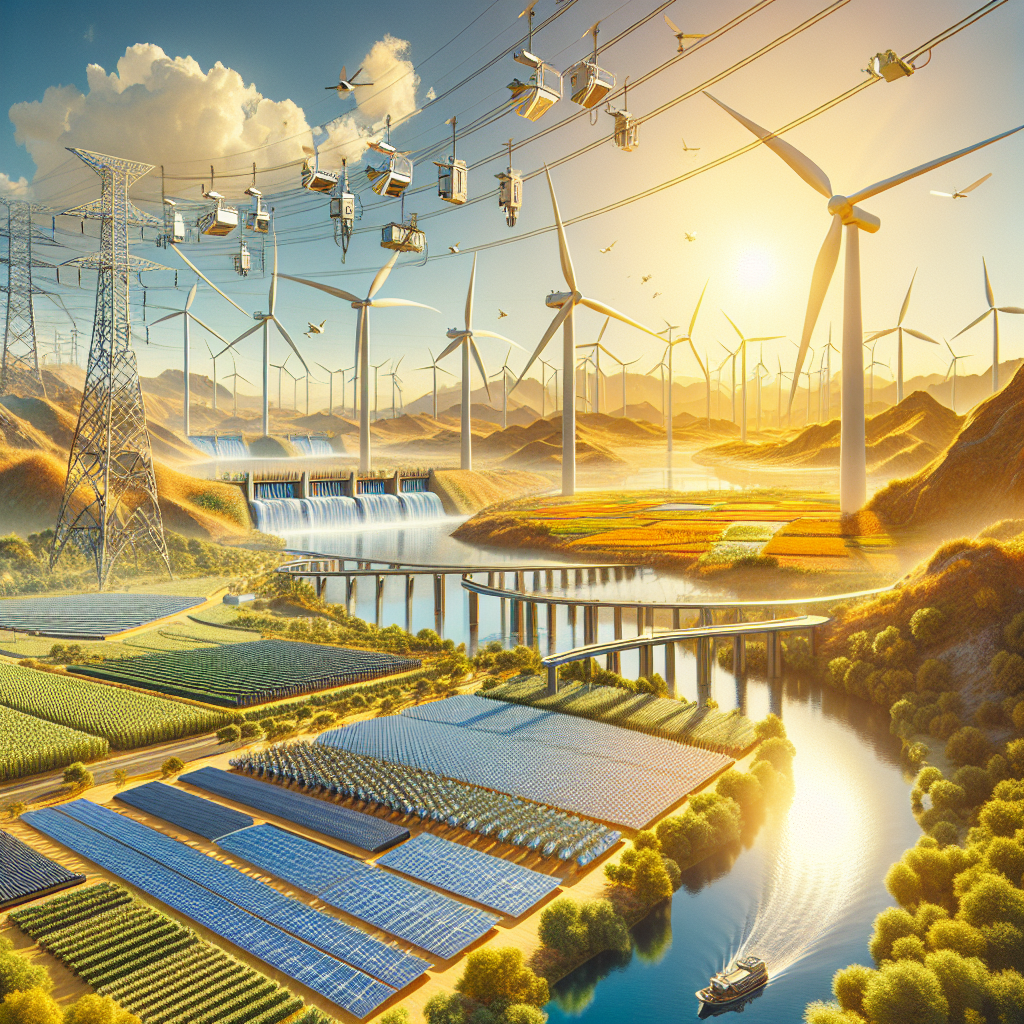Integrating Renewable Energy Sources into the National Grid
The global energy landscape is undergoing a significant transformation. Driven by the urgent need to decarbonize energy systems and tackle climate change, there is a widespread shift towards renewable energy sources. Solar, wind, hydro, and biomass energy are at the forefront of this shift, offering cleaner alternatives to fossil fuels. However, integrating these renewable sources into the national grid presents a unique set of challenges and opportunities. This article explores the importance of this integration, the challenges it poses, the strategies to overcome them, and the benefits it brings.
The Importance of Integration
The integration of renewable energy sources into the national grid is crucial for several reasons. Primarily, it reduces the dependency on fossil fuels, which are limited in supply and harmful to the environment. Renewable energy sources, being abundant and sustainable, offer a viable solution to meet the world’s growing energy needs while reducing greenhouse gas emissions. Moreover, integrating renewable energy enhances energy security by diversifying the energy supply and reducing the vulnerability to fuel price fluctuations.
Challenges of Integration
The integration of renewable energy into the national grid is not without its challenges. One of the main issues is the intermittent nature of sources like solar and wind energy. Their variability and unpredictability can cause stability and reliability concerns for the grid. Additionally, the locations with the highest renewable energy potential are often far from consumption centers, necessitating significant investment in transmission infrastructure. There is also the challenge of existing grid infrastructure, which was designed for centralized power generation rather than decentralized renewable energy sources.
Strategies for Overcoming Challenges
Overcoming the challenges of integrating renewable energy into the national grid requires a multifaceted approach. Advanced grid management technologies, such as smart grids, can enhance the flexibility and responsiveness of the grid to accommodate the variable output from renewable sources. Energy storage technologies play a crucial role in smoothing out the supply by storing excess energy when production exceeds demand and releasing it when the opposite is true. Additionally, improving and expanding transmission infrastructure can facilitate the transfer of renewable energy over long distances from production sites to consumption centers. Regulatory and policy frameworks also need to be updated to support and incentivize the integration of renewable energy.
Benefits of Integration
The benefits of integrating renewable energy into the national grid are manifold. Environmentally, it leads to a significant reduction in carbon emissions, contributing to global efforts to combat climate change. Economically, it can lead to lower energy costs in the long term, as the marginal cost of renewable energy is virtually zero once the initial investment is made. It also stimulates job creation in the renewable energy sector. Socially, it can improve energy access, particularly in remote areas where off-grid renewable solutions are viable.
The Path Forward
The path to integrating renewable energy into the national grid involves continued investment in technology, infrastructure, and policy frameworks. Collaboration between governments, the private sector, and the research community is essential to drive innovation and scale up the deployment of renewable energy technologies. Public awareness and support are also crucial, as societal acceptance can accelerate the transition to a renewable-based energy system.
FAQs
Q: Can the grid handle 100% renewable energy?
A: Yes, with significant upgrades to grid infrastructure, advancements in energy storage, and smart grid technologies, it is technically feasible for the grid to handle 100% renewable energy. However, achieving this requires concerted efforts from all stakeholders involved.
Q: How do energy storage systems help with renewable integration?
A: Energy storage systems help balance supply and demand by storing excess energy produced during periods of high renewable output and releasing it during periods of low output or high demand. This mitigates the variability and improves the reliability of renewable energy.
Q: What are smart grids?
A: Smart grids are an upgraded electricity network enabling a two-way flow of electricity and data. They use advanced communication and control technologies to improve the efficiency, reliability, and sustainability of the production and distribution of electricity, facilitating the integration of renewable energy sources.
Q: Is it more expensive to integrate renewable energy into the grid?
A: Initially, integrating renewable energy into the grid requires significant investment in new technologies and infrastructure, which can be expensive. However, over time, the operational costs are lower compared to fossil fuels, and the benefits, including reduced environmental impact and energy costs, can outweigh the initial expenses.
Q: Can renewable energy provide a reliable power supply?
A: Yes, with the proper infrastructure, such as energy storage and advanced grid management systems, renewable energy can provide a reliable power supply. Diversifying the renewable energy sources and geographical spread can also enhance reliability by reducing dependency on a single source or location.
Integrating renewable energy sources into the national grid is a complex but necessary endeavor for a sustainable future. While challenges remain, the potential benefits in terms of environmental protection, economic savings, and social well-being are immense. With continued innovation and cooperation, a renewable-powered grid is within reach, promising a cleaner, more sustainable energy future for all.

